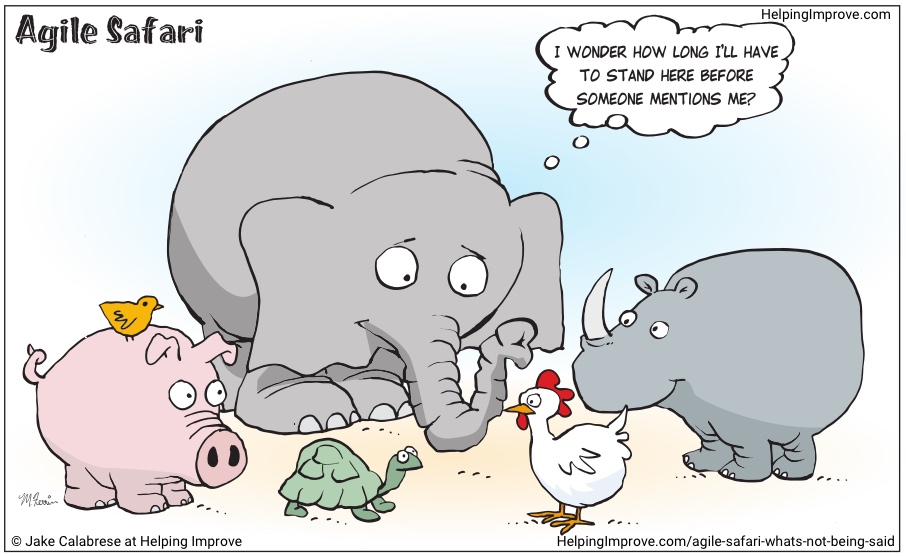
Last October, I helped the Agile Alliance Board of Directors with their quarterly meeting. They asked me to write up one of the ways we worked with some difficulties that came up.

Last October, I helped the Agile Alliance Board of Directors with their quarterly meeting. They asked me to write up one of the ways we worked with some difficulties that came up.
When I am at conferences or events being run using Open Space Technology (learn more about attendee-driven conferences), people often ask me, “Should I propose an open space session?” As we get into the discussion, I tend to ask the same core questions:
I find many things puzzling. One that is puzzling, frustrating, and annoying is how people continue to use outdated methods to train.
Great markers provide you with the option to create many different types of charts, diagrams, and pictures in your training or facilitated sessions. If you don’t use markers in your sessions, that might be a sign you need to make some changes!
Project retrospectives are challenging. I spoke a bit about this in lessons learned vs. project retrospectives. You might look at a merger, acquisition, implementation of a new ERP system, or even a major upgrade of an ERP or CRM system. These are non-reoccurring events. A retrospective of this type is quite different from a typical agile retrospective, primarily because on this type of project, people will change and the project will not repeat (the definition of a project is that it is a unique endeavor). At issue here is the fact that if the people will not be the same and the project does not reoccur – then they can’t come up with actions they will apply right away based on what they learned. Ideas for change often just end up in a spreadsheet, a book shelf, or some electronic tool. A big book of “lessons learned” that sits on the shelf gathering dust does not provide much, if any, value.

Have you been in a situation where no one would bring up the problem that everyone knew was “in the room?” I’d guess that everyone has been there. So often, we don’t bring up the “elephant in the room.” For anyone who has not heard of this, the elephant in the room is a saying for the real or obvious truth that is not being addressed. Given an elephant in a room would be hard to miss, when people ignore it, they are typically pretending it is not there.
I was presenting Building Antifragile Relationships and Teams at Santa Barbara Agile recently and as we worked on ideas for a conflict protocol, we started discussing the common theme of “facts vs. feelings”. I’ll point out that there was not a hard-line view in the group as to one way or another, but it came up and opened up a nice discussion on the topic.

I mentioned The Focused Conversation as a great tool you can use to help structure a conversation. Focused Conversations include four important categories of questions — objective, reflective, interpretive, and decision focused questions. The acronym ORID is sometimes used to describe The Focused Conversation.
The structure also provides a way to hear all of the voices that need to be heard within the group or team. You might even use this as part of an agile retrospective. Using the tool is another way to build antifragile relationships in teams and organizations.
Agile Coaching. A seemingly simple term that causes so much confusion. Much of the confusion seems to stem from the reasonable question of “what does an agile coach do?” ACI (Agile Coaching Institute) defined an Agile Coach Competency Framework. I’ve used the framework over the years both for agile coaching and leadership. I find it valuable to help people to understand the different perspectives they can approach agile coaching from. We use the framework as a one tool in Advanced Scrum Master Training (A-CSM) and as one set of approaches and skills in Leading Amazing Teams Training. We find it offers leaders insights into how they can shift from a leader-follower to a leader-leader approach to leadership. ACI had a whitepaper outlining the framework (created by Lyssa Adkins and Michael Spayd on a website – no longer active). This article includes my summary of it based on multiple sources — as well as my personal experience with it and ways to learn from it.
I always considered this six question format to be the Baseline Agile Retrospective Format. I say baseline instead of standard because a baseline is something to build on, not an ‘always the way’ standard (I know I’m splitting hairs here).
I believe the six question baseline agile retrospective format is a solid way to teach people how to do an agile retrospective. They can see, relatively clearly, the different parts that should be included. It can be a useful starting point to address additional questions and challenges.
I was coaching someone a while back and asked them to tell me what their vision statement: what motivated him? When I heard the answer, I was not moved. What I heard was boring. I knew this person had passion for what he did. What happened to it?
If I ask you to tell me why you do what you do, and you are not jumping up and down a bit, getting a bit fired up, I don’t buy your passion! Here are some ideas to find the passion in your vision statement. They may not be for everyone, but I know they have helped some people already, so I wanted to share.